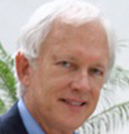
MS&E 273: Turning Stanford Students into Entrepreneurs

Now in its 25th year, Management Science & Engineering Course 273 remains one of the most highly rated courses in the School of Engineering.
Big Switch Networks, Skybox Imaging, WiFiSlam, Sourcegraph — the list of startups launched by Stanford students soon after taking the course “Technology Venture Formation” goes on. That’s because the class, formally known as Management Science & Engineering 273, is so much more than a series of lectures.
MS&E 273 is intended for graduate students with serious entrepreneurial aspirations, and there is just no way to learn the fundamental skills and processes for successfully launching an innovative and sustainable tech company simply by listening and taking notes.
The key to the course’s success begins with its teaching team: a trio of highly accomplished practitioners of entrepreneurship who teach in the Stanford School of Engineering. Together, they bring decades of experience in all aspects of high-tech entrepreneurship: from founding and investing in startups to leading companies as board members and executive officers.

The course’s founding faculty member, Mike Lyons — a veteran entrepreneur and chair of a network-security startup with offices in Silicon Valley — figures that more than 200 tech startups have been launched by alumni of MS&E 273 since it was first offered in 1988. Also a co-developer of the Stanford Technology Ventures Program, which offers MS&E 273, Lyons said the course gives students “actionable tools” that allow them to understand the startup process and the risks they must minimize in order to ensure success.
“You want to start a high-tech company? You are going to learn how to do it — by doing it.”
Mike Lyons
“We use scenario-based education,” said Lyons, a consulting associate professor in the engineering school’s Department of Management Science & Engineering. “You want to start a high-tech company? You are going to learn how to do it — by doing it.”
Specifically, students in the class form teams and then propose and assess a technology concept or service in the framework of a business opportunity. The 10-week course demands that the proposed technologies have “a critical innovative advantage that will provide sustainable differentiation.”
The class sessions are only three hours a week, with various experts invited to speak on Tuesday nights about practical strategies ranging from go-to-market techniques to building financial models and getting a company financed. Later in the course, the student teams stand before a group of Silicon Valley CFOs and explain their business model and proposed financial operations.
The 45 students in the current class are now in their final week, when they make their pitches to a panel of partners at top venture-capital firms. However, the panelists serve not as investors, but as experts in evaluating business plans and opportunities.
Stated plainly, it’s not enough to have a cool technology idea that no one has thought of before. There has to be a viable business opportunity for the technology, and MS&E 273 focuses on assessing and defending its commercial viability, according to fellow course developer and instructor Audrey MacLean.
“That whole process is something that’s valuable to students, whether they ever start a company or whether they work for a big company.”
Audrey MacLean
“That whole process is something that’s valuable to students, whether they ever start a company or whether they work for a big company,” said MacLean, also a consulting associate professor in MS&E. MacLean has four decades of combined experience in the computer and communications industries, with leadership roles as a founder, CEO, seed investor and board member.

She belongs to Fortune’s Most Powerful Women group, has been named by BusinessWeek as one of the 50 most influential businesswomen in America, has made the cover of Forbes and been featured multiple times in the magazine.
To illustrate MS&E 273 as something more than a class, MacLean says that in the case of entrepreneurship, the lab is the real world: “And if you look at Stanford as a research institution,” MacLean explained, “you obviously want to have the professors who are teaching the subject to have spent time in that lab.”
Jack Fuchs, the third and newest member of the teaching team, adds that the students must prove that the technology they’re pitching has true technical differentiation. The team also demands that the venture itself takes a novel approach in its execution, and that the students present a clear vision of what their businesses would look like five years on.
“But for the people who are entrepreneurs, it is a way of opening up your life and your career that is different from anything else …”
Jack Fuchs
Fuchs, an adjunct faculty member in MS&E, said he wants to see a good fit between the student and the particular business opportunity he or she wants to pursue. “The number one lesson I would like students to take away is that entrepreneurship is not for everybody,” he said. “But for the people who are entrepreneurs, it is a way of opening up your life and your career that is different from anything else that you can possibly experience in the business world.”

According to Fuchs, one of the most important things the course does is expose all the potential founders to the commercial side of entrepreneurship. “We prepare the students’ minds for the vagaries of that journey,” he said. “Even if many of the students only ever become technical leaders in the companies, their appreciation of the commercial side will serve them extremely well.”
While all three instructors have had great success in their careers, it’s clear that they continue to teach MS&E 273 because they are passionate to pass on real-world lessons to the next generation of innovators. Fuchs, who also teaches entrepreneurship at the University of California-Berkeley, says he is inspired by exposing brilliant and motivated engineers to high-powered venture formation. For her part, MacLean says MS&E 273 is the course she wishes was offered when she first started out.
And for Lyons, ultimately, his commitment to the course stems from a deep belief in the positive impact that entrepreneurship can have on the world. “One of the reasons we’re very interested in this is because we all believe — certainly in the engineering school — that the way to build a powerful economy is to increase entrepreneurial activity that’s successful, that produces economic gains for societies and improves the standard of living for the individuals and the societies connected with it.”
Before she went on to co-found venture-capital firm Floodgate, Ann Miura-Ko served as a teaching assistant in MS&E 273 for four years, lecturing in the class while also working toward a Ph.D. in the School of Engineering. She said the most successful students were the ones who saw the course, not simply as a class, but as an experience.
“They learned not just what it is to be an entrepreneur,” Miura-Ko explained. “They actually became an entrepreneur in that class.”
Management Science & Engineering 273: Technology Venture Formation is open to graduate students only, but welcomes registrations from across engineering and other Stanford schools.


